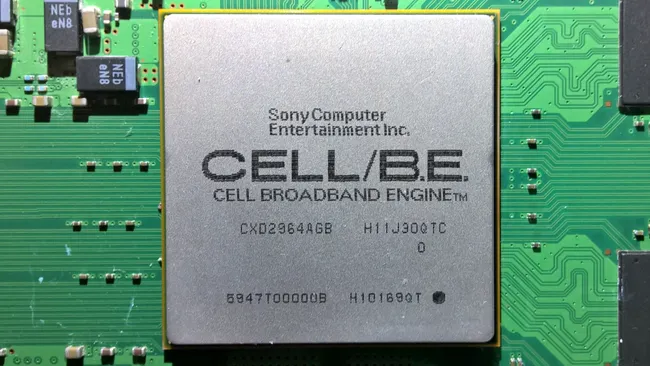Thick Thighs Save Lives
NeoGAF's Physical Games Advocate Extraordinaire

Just after Computex 2024, AMD CEO Lisa Su sat down with Stratechery to conduct an extended interview about solving hard problems throughout her career— including her time at IBM and contributing to the legacy of PlayStation from both there and AMD afterward. As she notes, "I've been working on PlayStation for a long time, if you think about it. PlayStation 3, 4, 5...[like the common thread] across multiple companies, yes."
Now, even if you're familiar with the PlayStation 3 and its nature as being difficult to program thanks to its IBM PowerPC-based Cell processor, you most likely didn't know Lisa Su had any involvement with it before this week. Details are few and far between, but we did manage to find the earliest statement where pre-AMD CEO Lisa Su commented on the matter.
According to Lisa Su, then-Director of Emerging Products at IBM in 2001, "We [IBM] started with a clean sheet of paper and sat down and tried to imagine what sort of processor we'd need five years from now." The decision that IBM, Sony, and Toshiba made was to create a CPU with an extreme focus on parallelization.
Today, that approach is fairly common through multicore CPUs, Simultaneous Multi-Threading (SMT, or Hyper-threading under Intel marketing), and even dedicated Efficiency cores, but SMT wouldn't emerge until 2002, and the first consumer multicore CPUs from AMD and Intel wouldn't be seen until 2005. And, of course, the first-ever multicore was released by IBM for workstation and server use in 2001— the same year they were planning the PS3's Cell processor.
The interviewer points out that Sony's PlayStation 3 is viewed as one of its least successful consoles, which is true. The PlayStation 3 pretty much lost the generation handily to Nintendo's cheap, casual-friendly Wii and Microsoft's less powerful but easier Xbox 360. The complexity of the architecture meant that cross-platform games didn't always perform as well as they should on PS3, though as developers (particularly first-party devs) mastered the hardware, it did result in the most visually stunning console games of the latter half of the generation being Sony exclusives, like Uncharted 3 and its ilk.
Lisa said, "The Cell processor was extremely ambitious at that time, thinking about the type of parallelism it was trying to get out there. Again, I would say, from a business standpoint, it was certainly successful. As you rank things, I think history will tell you that there may be different rankings."
"My perspective is, the console era has gone through phases [...] but once you went to HD, you had tremendous increase in cost of asset creation, you had developers heavily motivated to support multiple processors, you had game engines coming along. Suddenly, no one wanted to go to the burden of differentiating on the Cell; they just wanted to run on the Cell," Su explained.
Interestingly, the seventh generation of home consoles (PlayStation 3, Xbox 360, Nintendo Wii/Wii U) also marks a shift in AMD's allegiances to console manufacturers. AMD produced graphics chips for both Nintendo and Xbox, and all three console manufacturers used the PowerPC CPU architecture. But come to the eighth-gen (PS4, XB1, Switch), both Xbox and PlayStation had switched fully to AMD-powered x86 CPU and GPU architecture. The Switch also saw Nintendo pivot to an Nvidia-powered SoC design (with Arm CPU cores) for their new hybrid console focus.
With the added context of this interview, one can't help but wonder if Lisa Su's unifying thread throughout the last three generations of PlayStation hardware isn't a coincidence. It could just be corporate happenstance, but going from a humble Product Director and Engineer working on the PS3 at IBM to Senior vice president (in 2012, CEO in 2014) at AMD, setting the future course of both PlayStation and Xbox hardware, is truly impressive.
It's also a great win for AMD, in general, to provide the hardware behind the two biggest consoles on the market for two consecutive (and a third upcoming) console generations. No matter who wins between Sony and Microsoft and their console war, AMD wins, and that's the kind of thinking that earns you a CEO spot.

AMD CEO Lisa Su reminisces about designing the PS3's infamous Cell processor during her time at IBM
Even before she worked at AMD, Lisa Su was making big moves and proving to be one of PlayStation's greatest allies






